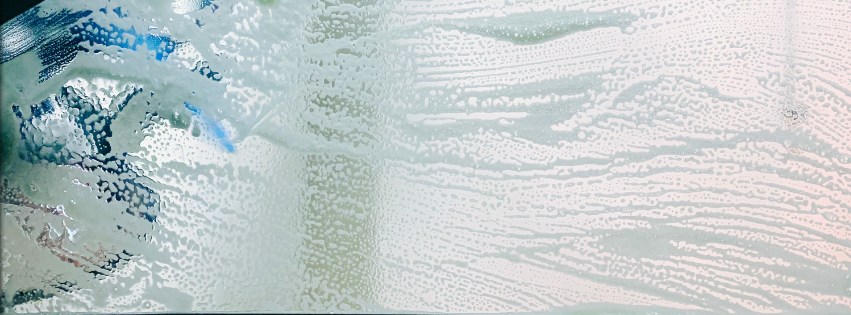The Science Behind Car Wash Chemicals: What Makes Them Work
Understanding the chemistry of car wash products — from surfactants and pH balance to the reactions that make cars shine.

A sparkling clean car isn’t just about water and elbow grease — it’s chemistry in motion. Every time a vehicle rolls through your wash, a carefully balanced blend of car wash chemicals goes to work breaking down grime, neutralizing contaminants, and restoring shine. Understanding how these chemicals function helps you choose the right products, improve wash results, and protect your customers’ investments.
How Surfactants Lift Away Dirt
At the heart of most car wash soaps are surfactants — short for surface-active agents. They’re the unsung heroes of the cleaning process. Surfactants have a split personality: one end of the molecule loves water (hydrophilic), while the other loves oil and grease (hydrophobic).
When applied to a dirty surface, surfactants form micelles, tiny molecular clusters that trap oily dirt and lift it away from the car’s surface. The rinse water then carries these contaminants off the paint, leaving a spotless finish.
There are four major types of surfactants:
- Anionic surfactants (negatively charged) – excellent for cutting grease and lifting dirt.
- Cationic surfactants (positively charged) – used mainly in conditioners and protectants.
- Nonionic surfactants – mild and compatible with other cleaners; great for balanced cleaning.
- Amphoteric surfactants – adaptable to both acidic and alkaline environments, providing versatility.
The right combination of surfactants determines whether your detergent foams well, rinses cleanly, or leaves a hydrophobic layer that enhances drying and shine.
The Importance of pH Balance
The pH level of a car wash chemical — how acidic or alkaline it is — plays a critical role in cleaning performance and paint protection. The pH scale runs from 0 (very acidic) to 14 (very alkaline), with pure water at 7 (neutral).
- Acidic cleaners (pH < 7) are designed to remove mineral deposits, brake dust, rust stains, and water spots. They dissolve inorganic contaminants that alkalines can’t easily touch.
- Alkaline cleaners (pH > 7) target organic residues like grease, oils, and road film — perfect for pre-soaks and degreasers.
- Neutral cleaners (around pH 7) are mild and safe for regular maintenance washes, often used in premium hand washes or wax-friendly soaps.
Finding the right pH balance ensures that your cleaning process is effective without damaging delicate clear coats, trim, or protective wax layers.
Chemical Reactions at Work
Car wash chemicals don’t just lift dirt — they react with it. For instance, when an alkaline cleaner meets acidic grime (like road salts or acid rain residue), a neutralization reaction occurs, loosening the bond between dirt and surface. Similarly, acid-based wheel cleaners dissolve iron particles and brake dust through oxidation reactions, converting solid contaminants into water-soluble compounds.
Even sealants and waxes involve chemistry: polymer-based protectants bond with the car’s clear coat, forming a hydrophobic barrier that repels water, reduces static, and guards against UV damage. Understanding these reactions helps operators adjust dwell times, dilution ratios, and product combinations for optimal results.
Acid vs. Alkaline Cleaners: Which Is Best for Your Car Wash?
The short answer: both, depending on the task.
Acid Cleaners
Ideal for wheels, glass, and pre-treatments that need to break down mineral buildup. However, they must be used carefully — prolonged contact can etch paint or dull aluminum surfaces if misapplied. Always follow manufacturer dilution instructions and rinse thoroughly.
Alkaline Cleaners
Perfect for pre-soaks and degreasers, they emulsify oils and loosen grime from body panels and undercarriages. These are especially useful for vehicles exposed to oily roads or industrial pollutants. However, using too strong an alkaline solution can strip wax or protective coatings, making neutralization or reapplication necessary.
For touchless and automatic washes, many operators use a two-step cleaning process:
- Acidic pre-soak to remove mineral and metallic contaminants.
- Alkaline detergent to cut grease and organic soils.
This combination maximizes cleaning efficiency and minimizes the risk of damage — a perfect example of chemistry working in harmony.
Choosing the Right Chemical Mix for Your Car Wash
Every car wash environment is different — from water hardness and climate to wash type and vehicle mix. Partnering with a trusted chemical supplier can help you customize formulations suited to your conditions. Brands like Car Wash Management and Car Wash Laboratories offer specialized products for different stages of the wash cycle, including:
- Pre-soak solutions for grime breakdown
- Foam detergents for high-foam visual appeal
- Wheel and tire cleaners for brake dust removal
- Surface protectants for hydrophobic shine
By choosing the right combination and maintaining proper chemical balance, operators can deliver consistent, safe, and high-quality results.
The Takeaway
Behind every gleaming car is a symphony of chemical reactions — surfactants dancing with dirt, acids dissolving minerals, and polymers sealing in protection. Mastering this chemistry means more than just clean cars; it means higher customer satisfaction, reduced rewash rates, and a longer life for every vehicle that passes through your wash.
For a deeper dive into optimizing your wash setup or sourcing professional-grade chemicals, visit Car Wash Management or explore Car Wash Laboratories for product options that bring science to your shine.
